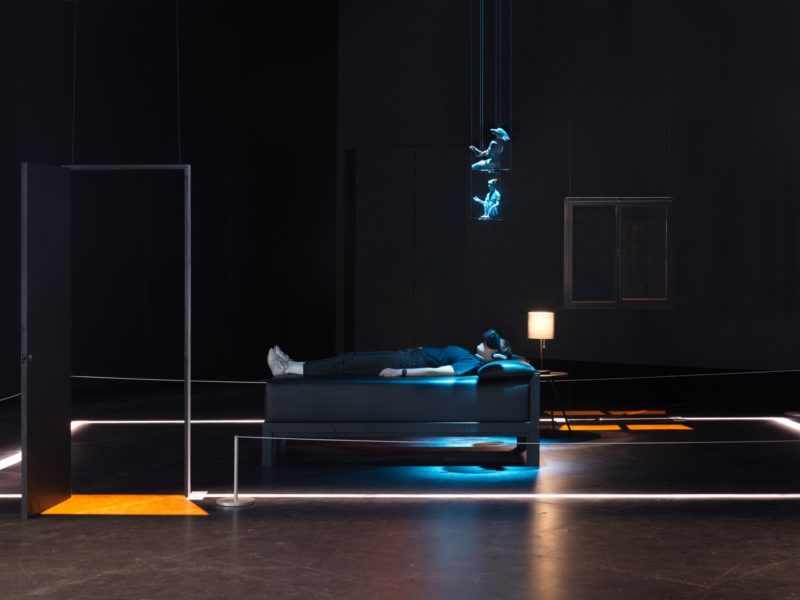The Process: Morehshin Allahyari, She Who Sees the Unknown: Kabous, The Right Witness and The Left Witness, 2019
Katie Peyton Hofstadter
In her long-term research-based art project She Who Sees the Unknown, Iranian artist Morehshin Allahyari reanimates stories of monstrous female/queer djinn that have seldom been told or forgotten in Islamic culture. Since she began the project, in October 2016, she’s combed through libraries from New York to Tehran and interviewed scholars around the globe, collecting and digitizing historical Islamic texts and images. She combines this research with findings from contemporary scholarship and, in doing so, builds a new record of the past. She calls this process “refiguring.”
She Who Sees the Unknown has been exhibited in galleries, at universities, and in museums, including the Whitney Museum of American Art, in New York City. It is built of five separate immersive, mixed-media experiences, which draw upon various artistic media (sculpture, 3-D printing, virtual reality, video, projection, hypertext narrative). Each installation is created using different technologies and centers on a different djinn, which, in pre-Islamic and Islamic theology is a term used to describe an intelligent spirit made of smokeless fire, a shape-shifter somewhere between an angel and a demon. Each djinn’s name doubles as the title of its respective installation. It includes Huma (حوما), the three-headed djinn responsible for heat and fever in the human body; the Ya’jooj Ma’jooj (یاجوج ماجوج), djinn of chaos and mischief, whose final release will signal the end of days; and Aisha Qandisha (عيشة قنديشة), the “opener,” and the djinn of rivers. Before seeing the piece we discussed—Kabous, The Right Witness and The Left Witness—my favorite piece in the series had been the Laughing Snake (مار قهقهه), which one can experience through a hypertext narrative on Artport, the Whitney’s online exhibition space.
You have reached your article limit
Sign up for a digital subscription and continue reading all new issues, plus our entire archives, for just $1.50/month.
Already a subscriber? Sign in





